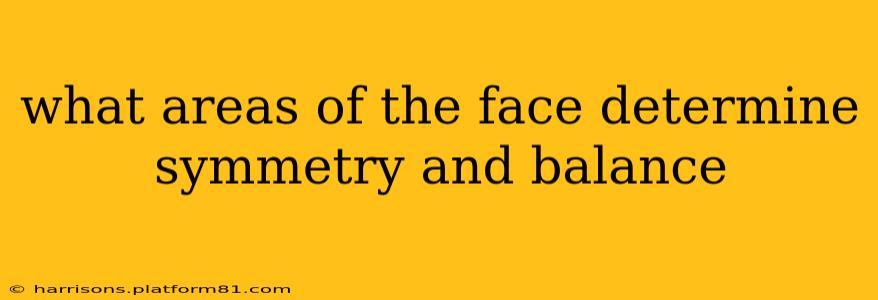What Areas of the Face Determine Symmetry and Balance?
Facial symmetry and balance are complex concepts, desired by many and studied by artists and scientists alike. While perfect symmetry is rare, the perception of balance and harmony in the face is crucial to its overall attractiveness. Several key areas play a significant role in determining this perception:
H2: The Role of the Midline:
The midline, the imaginary vertical line running down the center of the face, is paramount. A balanced face shows near-mirror image reflection across this line. Deviations from this ideal can create an asymmetrical appearance. This midline encompasses several key features:
- Forehead: The hairline, eyebrows, and the position of any features on the forehead (like scars or birthmarks) should appear roughly symmetrical across the midline. Slight discrepancies are often unnoticed, but significant differences can draw the eye.
- Nose: The nose is a central feature, and its position and shape heavily influence the perception of facial balance. A deviated septum or asymmetry in the nasal tip can drastically affect the overall symmetry.
- Mouth and Chin: The lips, philtrum (the vertical groove between the nose and upper lip), and chin should align harmoniously along the midline. A crooked smile or an uneven chin can disrupt balance.
H2: The Importance of Proportions:
Beyond symmetry, the proportions of different facial features play a critical role in overall balance. The "Golden Ratio" (approximately 1.618) has often been cited as an ideal proportion in aesthetically pleasing faces, although its relevance is still debated. Key proportional relationships include:
- Eye Spacing: The distance between the eyes is generally considered balanced when it roughly equals the width of one eye.
- Eye-to-Brow Distance: The distance from the eye to the eyebrow should be roughly proportional to the length of the eye itself.
- Facial Width to Length: The width of the face (measured across the cheekbones) relative to its length (from hairline to chin) also contributes to the overall perception of balance. A harmonious proportion is crucial.
H2: What about the Eyes? Are they the most important?
While the eyes are undeniably expressive and impactful features, they are not solely responsible for overall facial symmetry and balance. Although symmetrical eyes contribute to an aesthetically pleasing face, the other features mentioned above work in concert. An imbalance in one area can affect the perceived harmony of the entire face. Consider how an uneven nose might draw attention away from even the most beautiful eyes.
H2: How does the jawline affect facial symmetry?
The jawline significantly impacts perceived facial balance. A strong, defined jawline, balanced on either side of the midline, contributes to facial harmony. Asymmetry in the jaw, often resulting from injury or genetics, can disrupt this balance. This is why jaw surgery is sometimes considered a solution for extreme asymmetry.
H2: Are there other features that contribute to overall facial balance?
Absolutely! The interplay of various elements contributes to a balanced look:
- Cheekbones: The position and prominence of cheekbones contribute to facial structure and overall harmony.
- Ear Position and Shape: While less prominent than other features, the ears' placement and symmetry can subtly influence overall balance.
H2: Can minor asymmetries go unnoticed?
Yes. It’s important to note that perfect symmetry is extremely rare. Slight deviations are often unnoticeable or even add character to a person's face. It's the overall harmony and proportion of the features that create the perception of balance and beauty, rather than strict mirror-image symmetry.
Understanding facial symmetry and balance requires considering the interplay of various features, their proportions, and their positions relative to the midline. While perfect symmetry is unrealistic, the pursuit of balance is a key element in facial aesthetics.
